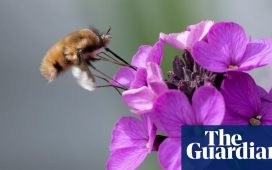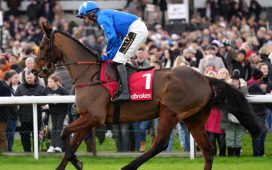Despite the deployment of 22,000 lockable traps and more than 40 tonnes of poison dropped via helicopters, nearly 100 rats have been discovered on Lord Howe Island since April – but experts are still hopeful the $17m eradication program has been a success.
The last rat seen on the island was supposed to have been flushed out by a detection dog in 2019 but the latest mop-up effort marks a significant test for the sometimes controversial program on the remote, world-heritage listed island 700km north-east of Sydney.
Before eradication efforts began in 2019, Lord Howe Island had an estimated rodent population of 300,000 rats and mice – roughly 1,000 rodents for each of the island’s 350 residents.
In mid-April a rat was spotted on a road near Ned’s Beach Cemetery by a local woman, stoking fears the program had failed. Within days two rats had been killed and an autopsy revealed the pair to be a juvenile male and a pregnant female.
The pair were the first confirmed rats to be found since the eradication efforts began.
After the discovery, authorities set up 250 cameras with motion detectors in bushland and flew in teams of experts with specially trained dogs from mainland New South Wales and New Zealand to track any remaining rodents. As a result 96 black rats have since been caught and killed.

It has now been 85 days since the last rat sighting and genetic testing has been carried out to learn whether the rats were survivors or arrived from the mainland. Results are not expected until December.
The latest phase was supported by an additional $3m in grant funding, of which $1.8m has so far been spent. If no further rats are detected by the end of December, the monitoring program will be scaled back.
Atticus Fleming, chair of the Lord Howe Island Board and head of NSW National Parks, said the focus would then pivot to “biosecurity measures” to stop new rats arriving from the mainland by boat, but some monitoring would remain as a precaution.
“Doing nothing is not an option,” Fleming said. “The fact one of the world’s most endangered birds has doubled its population is evidence of success.
“We are talking about a world heritage-listed island. We are talking about a part of the world that is recognised as being of outstanding value – one of the jewels in the crown of the planet. And so we need to take that really seriously.”
Rats were said to have arrived on the island after jumping ship. Mice first appeared on the island in 1850, with rats following in 1918 after escaping from a ship that sank off the coast.
The introduction of rodents put pressure on endangered species such as the flightless Lord Howe woodhen and drove several species extinct, including five land birds, 13 invertebrates and two plant species.
Since having been returned to the island’s environment, woodhen numbers have rapidly recovered – from 250 birds to roughly 600 in March.






